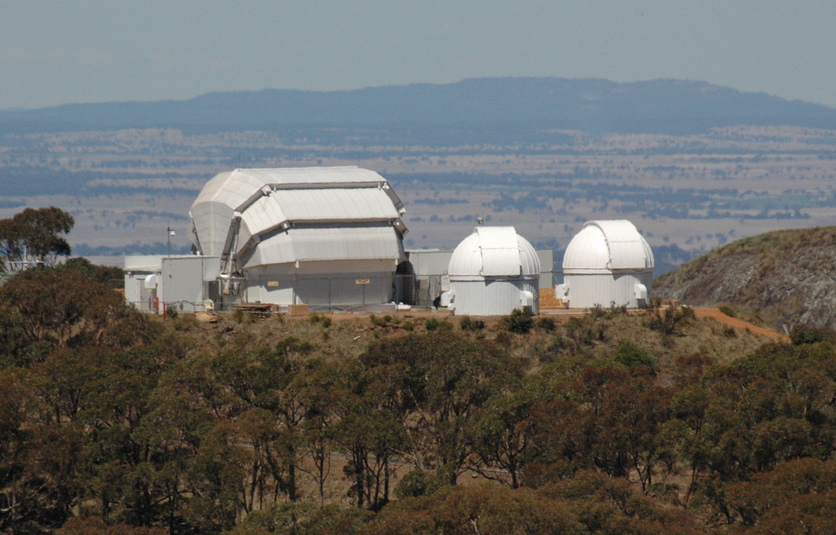Help astronomers at Las Cumbres Observatory, California, study exoplanets – planets that orbit stars other than our Sun. Do this by interpreting images taken by their telescopes in Hawaii, Australia and California. Calculate measurements that you can use to confirm the presence of exoplanets and determine their size.
URL: https://lco.global/agentexoplanet (this is now a legacy website)
Note: Agent Exoplanet is no longer active. For more details see the announcement on the LCO website Agent Exoplanet comes to an end, included are details on some of the highs and lows of this project.
Update
One of Agent Exoplanet's project partners, MicroObservatory, has released DIY Planet Search which does everything Agent Exoplanet did and more.
Reach: Worldwide
Nature of Science focus: Online citizen science projects can be used to develop any of the Nature of Science (NoS) substrands. Identify aspects of NoS that your students need to get better at or understand more fully and then frame your unit to be very clear about these things when you do them.
Science capability focus: Interpret representations
Science focus: Light, astronomical systems
Some suggested science concepts:
- Exoplanets are planets that orbit stars other than our Sun. They are found beyond our Solar System.
- Light travels in straight lines – shadows form when the light is blocked.
- When an exoplanet transits between a star and a telescope, the light that is ‘seen’ by the telescope is not as bright.
- Light intensity (brightness) can be graphed as a light curve over time.
Many concepts could be learned – focusing on a few can often be more powerful. Develop your learning outcomes and success criteria from these concepts as well as the Nature of Science strand and the science capabilities.
Four examples of learning outcomes:
Students can:
- explain the cause of shadows
- demonstrate how light and shadows relate to finding exoplanets
- explain what a light curve graph represents
- make valid conclusions about the meaning of a range of light curve graphs.
About exoplanets
Exoplanets are found orbiting stars beyond our Solar System. Since first being discovered in 1992, thousands of exoplanets have been identified using a range of different methods.
The transit method can be used to identify exoplanets that have an orbit that is lined up so that it passes between its star and Earth. When the exoplanet passes in front of a star (called an exoplanet transit), the light from the star dims slightly. This dimming is captured by telescope images.
See the Hub article Planet hunting.
About Agent Exoplanet
Las Cumbres Observatory’s telescopes in Hawaii, Australia and California have taken sequences of images of particular star fields over a period of time. Use these images to spot exoplanet transits by measuring the brightness of the star as the exoplanet passes in front of it and blocks some of the starlight.
The technique is clearly explained using a short video. Participants click on the target star, some empty sky and a comparison star across a number of images and then the programme develops a light curve that can be interpreted for a transit signal.
A limited number of star fields are provided for analysis. It’s not clear what happens to the information that is contributed.
Related content
Teacher Matt Boucher used this online database of star fields within a year 7/8 unit on light. Read the case study and accompanying unit plan with activities to find out how he modelled the transit of an exoplanet and the impact of this on the star’s light intensity. He used Agent Exoplanet to focus on how the light curves are generated and then he used the citizen science project Planet Hunters in which students study data from NASA’s Kepler spacecraft.
Here are some planning tips for when you intend to use a citizen science project with your students.
This article uses Ururangi, a whetū in the Matariki cluster, to highlight the importance of the visible night sky to culture and wellbeing in Aotearoa.
In this video ākonga who’ve participated in this project provide a brief explanation about citizen science projects, how they benefit the science community and why they like being involved.
In Hunting galaxies far far away – here’s how anyone can explore the universe astronomer Dr Sara Webb talks about her fascination with distant galaxies and provides information on some great online tools that can be used to look at our universe through the eyes of many different telescopes.
Useful links
Las Cumbres Observatory has developed supporting information including a teacher’s guide and student activity sheet. They suggest using a orrery (a mechanical model of the Solar System) to explain why the Sun’s light dims when a planet transits between the Sun and Earth.
Find out more about exoplanets at NASA’s What is an exoplanet? and Exoplanets Exploration.
In April 2018, NASA launched Transiting Exoplanet Survey Satellite (TESS) – the next step in the search for planets outside of our solar system, including those that could support life. TESS will survey 200,000 of the brightest stars near the sun to search for transiting exoplanets.
NASA citizen science projects are open to everyone around the world – see the range of space related projects on their website.
MicroObservatory has released DIY Planet Search which does everything Agent Exoplanet did and more.
Acknowledgement
This outline was written as part of Victoria University of Wellington's Citizen Scientists in the Classroom project funded by the Ministry of Education's Teaching & Learning Research Initiative.


